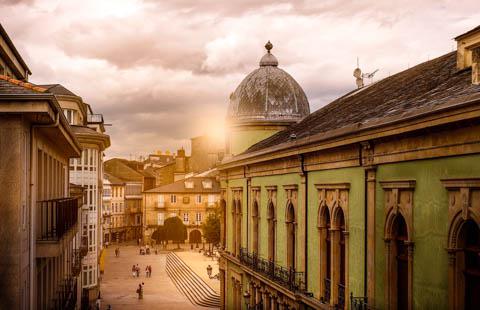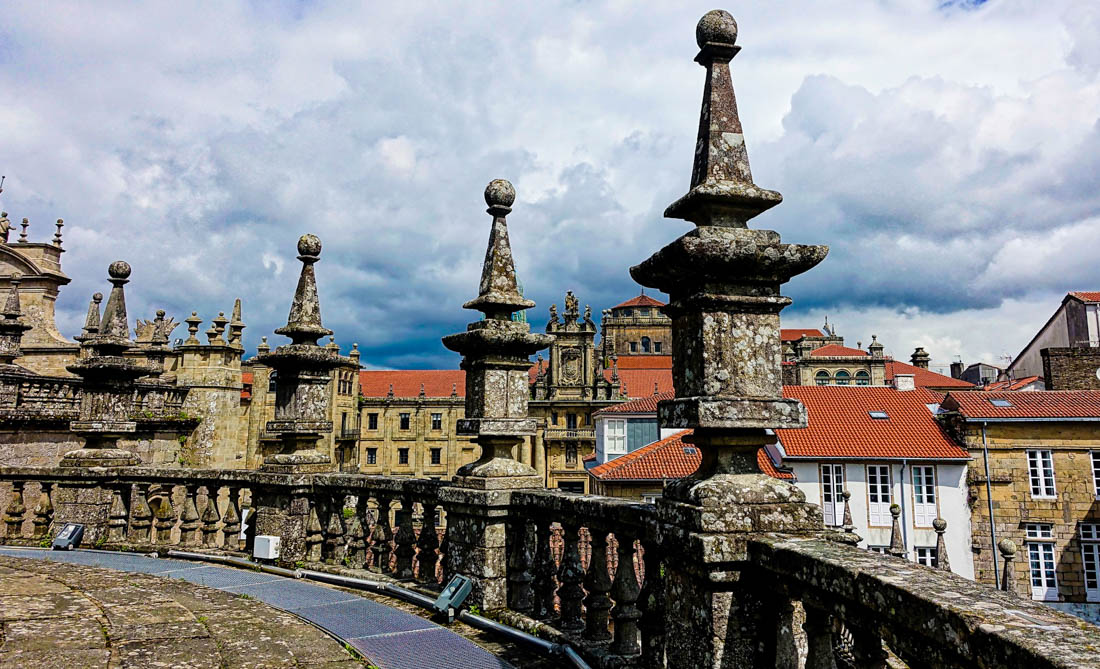Traveling in Galicia
 Lugo, Spain
Lugo, Spain
Located in the lush green corner of northwestern Spain, the region of Galicia is best known for its seafood and the Cathedral of Santiago de Compostela located in the capital city. With an extensive Atlantic coastline, the climate of Galicia is often damp, though there are a number of rugged beaches that are frequented during the summer season. Other highlights include a culture that traces back to Celtic tribes and unique architecture from ancient standing stones to elaborate cathedrals.
Regions
The capital and probably the most visited city of the region is Santiago de Compostela. In addition to marking the final destination of the Way of Saint James pilgrimage, Santiago's public squares and narrow streets represent preserved examples another time and place firmly rooted in faith. Old town especially, with its cobbled streets and terra cotta roofs glow with an old world charm. The city is very navigable on foot with many shops, tapas bars, and bustling crowds. The cathedral, of course, is the centerpiece, its baroque façade of Galician granite dating back to the 12th century. Other notable towns and cities include A Coruna which is known for its Roman lighthouse, Lugo known for its Roman walls, Pontevedra which has a number of architectural gems, and Galicia's largest city, Vigo.
Related:
Looking for a party in Barcelona or Madrid?
Traveling alone to Granada or Seville?
Find a Contiki tour to Europe.


 Budget Your Trip is all about finding out how much everything costs so that you can travel cheaper and longer. Created by avid travelers Laurie and Bryan, our goal is to help you plan your next trip on the right budget. With average daily travel costs that are calculated from the budgets of real travelers, plus an analysis of hotel and tour prices, you can find out how much money you need to plan your next adventure. We also have plenty of travel advice, accommodation reviews, and activity suggestions.
Budget Your Trip is all about finding out how much everything costs so that you can travel cheaper and longer. Created by avid travelers Laurie and Bryan, our goal is to help you plan your next trip on the right budget. With average daily travel costs that are calculated from the budgets of real travelers, plus an analysis of hotel and tour prices, you can find out how much money you need to plan your next adventure. We also have plenty of travel advice, accommodation reviews, and activity suggestions.